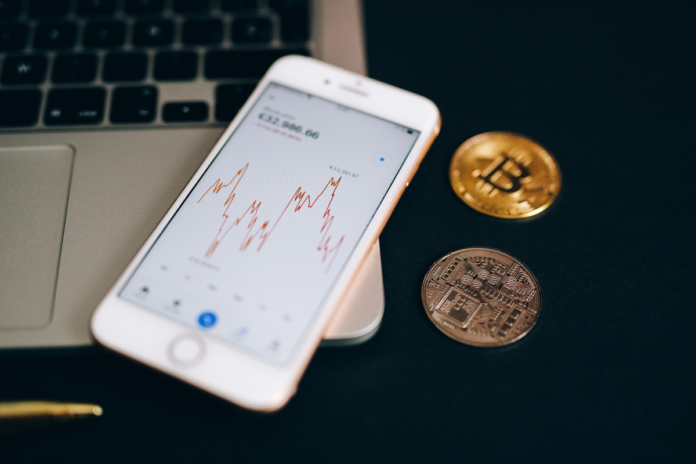Over the past few years, the city of Fontana has witnessed a surge in Bitcoin investments. Many individuals and businesses have embraced this digital currency, seeing it as an innovative financial tool that offers a plethora of opportunities. The growing interest in Bitcoin can be attributed to its potential for high returns and the increasing global acceptance of cryptocurrencies. You can also invest in Bitcoin Sprint.
One significant factor in this growth has been the establishment of Bitcoin ATMs across the city. These machines have made it easier for residents to purchase Bitcoin, thus making it a more accessible investment for the general populace. The convenience and ease of use provided by these ATMs have stirred a shift in the financial landscape of Fontana.
However, like any investment, Bitcoin does come with risks. The volatile nature of cryptocurrency markets means that prices can fluctuate drastically in short periods. It’s, therefore, crucial for individuals to thoroughly research and consider their financial situation before diving into Bitcoin investment. Despite the potential for high returns, the risk involved is equally high, and investors should proceed with caution.
How does Bitcoin’s limited supply contribute to its potential as a long-term store of value?
Bitcoin’s limited supply is one of its defining characteristics and arguably one of the most significant factors contributing to its potential as a long-term store of value. The maximum amount of Bitcoin that will ever exist is capped at 21 million coins. This scarcity is programmed into the very design of the cryptocurrency, making it resistant to inflation. In contrast to traditional currencies, which governments can print at will, Bitcoin’s supply remains fixed.
This inherent scarcity has led to comparisons between Bitcoin and gold, another asset considered a reliable store of value due to its limited supply. Just as gold must be mined from the earth at a significant cost in time and resources, Bitcoin must be ‘mined’ digitally, also at a high cost in computing power and energy. As the remaining supply of Bitcoin decreases, the difficulty and cost of mining new coins increase, further augmenting its scarcity and potential value.
However, it’s important to note that while scarcity is a key factor in Bitcoin’s potential as a store of value, it’s not the only one. Other factors, such as demand, market sentiment, regulatory developments, and technological advancements, all play a role in determining Bitcoin’s value. Thus, while the limited supply of Bitcoin suggests potential as a long-term store of value, it would be unwise to overlook the other volatile and unpredictable aspects of cryptocurrency investment.
How has Bitcoin fostered discussions about the role of central banks and government-backed currencies?
The introduction of Bitcoin has sparked global debates about the role of central banks and government-backed currencies. Central banks, tasked with maintaining economic stability, traditionally control the creation and flow of money in an economy. But Bitcoin, operating on decentralised technology, challenges this notion of monetary control. It offers an alternative form of currency that doesn’t rely on a central authority, and this shift in control has led many to question the efficacy and authority of central banks in the digital age.
Moreover, discussions about the legitimacy and value of government-backed currencies have been instigated by Bitcoin’s rise. Fiat currencies derive their value from the trust and confidence of the people who use it, backed by the government that issued it. However, Bitcoin, having no physical representation or government backing, yet still holding significant value, has caused many to rethink the concept of what constitutes ‘value’ in a currency. A system where the value is based purely on supply and demand dynamics, independent of government influence, has been brought to the forefront.
Despite the ongoing debates, it’s important to remember that Bitcoin and centralized currencies can coexist. While Bitcoin offers benefits like decentralisation and potential inflation protection, government-backed currencies provide stability and widespread acceptance. The key lies in finding a balance that leverages the benefits of both forms of currency and advances the global financial system.
Final words
Bitcoin’s emergence has indisputably reshaped the landscape of financial transactions and investments. The continuous evolution of this digital currency, coupled with its potential for offering high returns, has opened up new vistas for investors around the globe, including in Fontana. However, it is essential to keep in mind that while the rewards may be high, the risk quotient is equally significant, if not more. Therefore, it is always advisable to proceed with due diligence, seek financial advice when required, and invest wisely.
Increasing discussions around the role of central banks and government-backed currencies in the wake of Bitcoin’s rise underscore the impact and potential of this digital currency. Bitcoin’s decentralised nature, scarcity, and potential as a long-term store of value are making people reevaluate traditional banking norms and monetary control mechanisms. While these discussions are crucial for the evolution of our financial systems, it is equally important to remember that Bitcoin and governmental currencies can coexist, offering a more diversified and resilient financial ecosystem.





